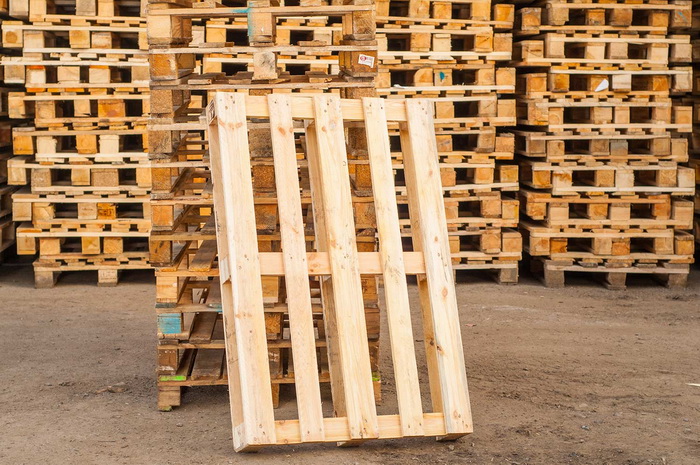Dealing with expedited shipping, modern transportation companies often deal with palletized goods. So it may be interesting for you to know how pallets are used, how to distinguish them, and how they are classified.
The creation of the pallets is connected with the development of the mechanized warehouse technique. The special construction of a tray with a double basis equipped with a lifting facility was created for the forklifts. Then, the pallets were standardized, and their sizes became universal. These changes caused a revolution in logistics.
The main advantage of pallets is to speed up the loading and unloading processes with the help of mechanization.
International logistics has the following classification of pallets.
- European pallets. The main types of wooden pallets for European shipping. These facilities are strictly standardized to the sizes and labeled. The upper flatness consists of five boards.
- FIN- pallets. Finch producers developed them. They are made from high-quality wood. Compared with the European pallets, Finnish ones have higher load capacity, bigger sizes, and more boards.
- American standard. It is an analog to the first type. The only thing that differentiates them is another measurement system.
- Metallic trays. Steel or aluminum facilities are usually used for industrial aims.
- Trays from a carton and pressed paper. They are easily affected by the humidity. Chinese and Asian companies produce them. Even when the trays fit the sizes of the cargo, they are appropriate to be used once.
- Plastic pallets. They are produced from molded plastic. The use is limited because of high cost.
Depending on the cargo-specific density, you can put from 10 to 40 pounds of goods on the European pallets. European companies produce up to 70 million items every year.
One more point which is important to discuss is a phytosanitary procession. The wood, which is used in pallet production, can transfer insects and bacteria. Thus, boards and bars must be processed according to international rules. During this procession, the wood is heated in the thermal units and impregnated with methyl bromide.
In the end, the specialists who did this processing, especially label the pallets. The label contains information about the year and the country of production, as well as the way of processing.
Warehouse processing of European pallets has significant meaning for the heterogeneous cargos and diverse packages. To eliminate the risk of damage to small packages, boards, and bricks during the lifting operations, the specialists wrap the cargo with a plastic liner and strengthen it with a sticky tape.
For the fragile cargo in paper packages, bubble wrap is used. The workers put the marks on the upper layer of the wrap. The marks include information on the storage conditions, the sender’s contacts, and the recipient’s address.

